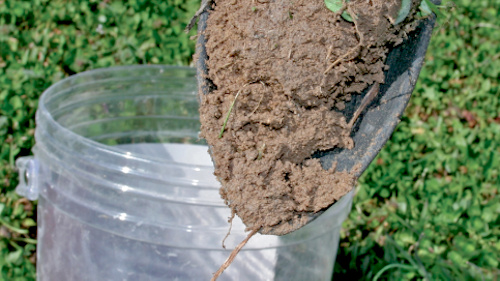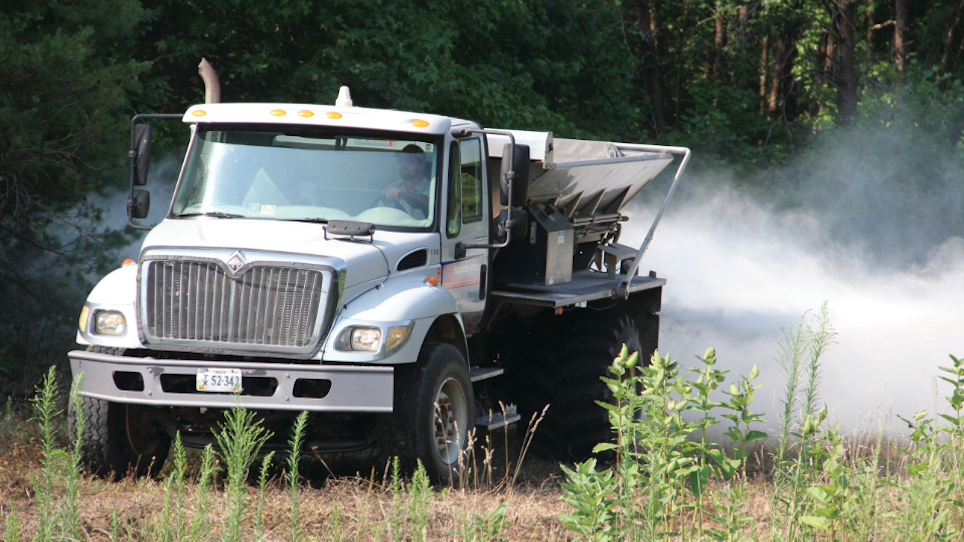A soil test is the first step for any food plot endeavor. A completed test provides a wealth of data about your soil’s current condition, as well as helps you steer your food plot creation in the right direction by recommending the ideal level of nutrients to add. The results provide a road map to growing greener grasses, better brassicas and addicting alfalfa.
A soil test is just that: A scientific evaluation of your soil’s nutrients, acidity and trace minerals. All three are vital ingredients in the food plot equation. Professional tests are conducted in a laboratory using high-tech equipment that takes precise readings. They are far more accurate than any at-home kit you can buy. And they are a lot easier.
“Take eight to ten core samples from zero to six inches deep, put them in a clean container, mix it all up, put as much as will fit in the sample box we provide and send it to us,” says University of Tennessee Cooperative Extension soil lab director, Dr. Robert Florence. “Make sure you mark the type of plant or plants you want to grow so we can tailor the amendments to those plants.”
In a couple weeks, you will receive an email that spells out your soil’s current pH, phosphorous and potassium levels, along with other trace minerals like zinc and magnesium. One element that isn’t included is nitrogen. That’s because nitrogen is volatile. It doesn’t stay in the soil long and is often absent or present in low levels.
“We only test nitrogen levels for corn and wheat and only when those plants are young,” says Florence. “How much is in the soil before you plant doesn’t really matter. What matters is how much you add when you plant.”
Soil test results will include recommended application rates of lime and nutrients, including nitrogen, phosphorous and potassium (also called potash) for the specific plants you want to grow.
Nitrogen is what turns plants green and builds strong leaves. It is especially important for grasses like oats and wheat. Phosphorous helps plants produce flowers, seeds and stronger stems. Potassium also contributes to stronger plants, helping them survive drought and disease.
These elements are represented by N, P and K, respectively, on your results and the numbers in the recommended fertilizer section represent the ratio of each element in a particular fertilizer. Therefore, a 10-10-10 fertilizer will have 10 percent each of nitrogen, phosphorous and potassium. The remaining 70 percent is filler.
Some soil tests recommend specific types of lime, usually either a dolomitic or calcitic lime, which is more commonly called aglime. It is what farmers typically use. Which one is right for you?
“Either one will get your soil’s pH to the right level if you use the recommended amount,” says Florence. “Most farm service companies use aglime, which typically comes in a powdered form. The pelletized lime you get from garden stores is often dolomitic lime and is easier to spread if you are using your own equipment, but that may not be practical if your soil requires a large amount. The bottom line is that either is fine.”
You shouldn’t be concerned with trace minerals like zinc, manganese and magnesium, either. All three play a role in soil health and plant growth, but Florence says that unless you are trying to grow grain crops for harvest, there is no need to worry about their levels.
“Just stick to the recommended fertilizer and lime application rates and you will be fine,” he says. “Dolomitic limestone can provide magnesium if your levels are abnormally low, but that is pretty rare.”
Whatever type you use, spread it well before you plant your seeds. “It can take weeks for lime to fully amend the soil’s pH level. And you want to make sure you disk it in,” says Steve Scott, Vice President of Whitetail Institute. “That’s important. If it just lays on the soil’s surface, it can take much, much longer to work down to the depth where it has the most effect or it might run off after a heavy rain.”

Fertilizer can be spread prior to seeding, too, but don’t put it down too long before you seed your plots. Remember, nitrogen will dissipate over the course of several weeks, so spread fertilizer just before you seed or even on the same day.
Lime is easy to find. Some fertilizers aren’t. 0-46-0? 0-0-60? Some specialty garden centers may carry those or something close, but your local big-box home store probably won’t. Most carry common types like 10-10-10, 20-20-20 or even a high nitrogen blend typically used on lawns. That’s okay.
“You can combine various fertilizers to get pretty close. If you aren’t sure, give us a call or call your local extension office. We can help you get as close as possible,” says Scott.
An even better option? Many farm supply stores and cooperatives can custom-blend fertilizers. The correct mixture of granulated nitrogen, phosphorous and potassium can be dumped right into the back of your truck. All you have to do show them your test results, provide an acreage number, and then spread it.
Get a Calculator
You need to know exactly how much you should spread on each plot, of course. Test results will provide recommended fertilizer and lime application rates in pounds per one acre, pounds per 1,000 square feet or both. That means you should know the exact size of your plots so you can use the proper amount of fertilizer. Guessing isn’t good enough.
“You either won’t put enough fertilizer on your plots or you will put too much if you don’t know how big your food plots are,” says Scott. “Over-fertilizing isn’t necessarily a bad thing, but it can cost you money you don’t need to spend. Putting down the wrong fertilizers can also feed plants you don’t want to feed. Adding nitrogen to a plot of Imperial Whitetail Clover, for instance, will help stimulate grasses, which you don’t want. Clover actually puts nitrogen in the soil, so you typically don’t need to add any.”
Something as basic as a laser rangefinder can be used to measure the length and width of a plot, assuming the plot is a square or rectangle. If not, you’ll have to do some more measuring and some rough calculations. GPS-based mapping apps can be used to get an accurate measurement, as well.
Whatever tool you use, you will still have to do some basic math. If your plot is 250 feet long and 110 feet wide, for example, it is 27,500 square feet. Simply divide the area of your plot by the 43,560 square feet (the total square footage of an acre). In this case, the plot is .63 acres, or about two-thirds of an acre. If your results recommend 225 pounds of 20-20-20 per acre, multiply 225 pounds by 0.63. That works out to about 142 pounds.
BONUS: Where to Get a Soil Test
State cooperative extension offices are scattered throughout every state. Typically, cooperative extension offices have soil test kits on hand available for as little as $10-$20. Simply follow the sampling directions, and then mail the sample to the address provided. In as little as a week or two, you will receive the results via email. A number of private companies, including Whitetail Institute, also sell soil test kits for about $20.






